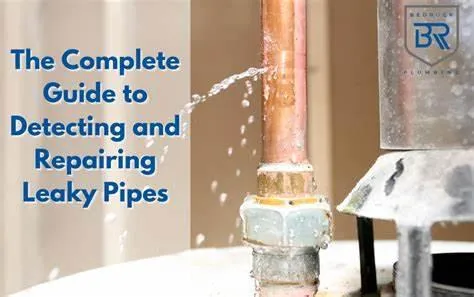
How to Handle Leaky Pipes and Fixtures: A Homeowner’s Step-by-Step Guide
A leaky pipe or dripping faucet might not seem like a major issue at first. It’s easy to dismiss the soft drip-drip as background noise or a minor annoyance. But here’s the thing: that constant drip is wasting water, driving up your utility bills, and potentially damaging your home’s structure over time. Left unchecked, even a small leak can lead to mold, mildew, warped cabinets, or worse—rotted wood and foundation issues.
The good news? You don’t need to be a licensed plumber to take action. Here’s how to recognize, manage, and fix leaky pipes and fixtures before they become a full-blown crisis.
1. Learn to Recognize the Early Warning Signs
Leaks often start small, and if you know what to look for, you can catch them before they do real damage. The most obvious clue is a steady drip from a faucet, but there are more subtle signs as well:
Water stains or discoloration on ceilings and walls
A musty or damp smell near plumbing fixtures
Soft or bubbling drywall
Mold or mildew growth in unexpected places
Warped cabinets or flooring near sinks and toilets
A sudden jump in your water bill without increased usage
These are not just cosmetic issues—they’re signals that water is going where it shouldn’t be.
2. Shut Off the Water Immediately
As soon as you notice a leak, your first priority should be stopping the flow of water to limit damage. Every home should have a main shut-off valve, typically located where the water line enters the house (often near the water heater or in a basement or utility closet).
For smaller leaks, such as under a sink or behind a toilet, look for the localized shut-off valve near the fixture itself. Turning it clockwise will typically stop the water supply to that specific area.
If water is actively pouring or soaking into walls or flooring, don’t waste time—turn off the main supply and call for help if needed.
3. Diagnose the Leak: Common Trouble Spots
Once the water is off, do some detective work. Most leaks fall into a few familiar categories:
Faucets and Showerheads: Dripping after shutoff usually means a worn-out washer, O-ring, or cartridge.
Under-the-sink Piping: Loose compression nuts, cracked pipes, or faulty seals on the drain can all lead to slow, steady leaks.
Toilets: Leaks around the base may indicate a bad wax ring, while constant tank refilling could point to a flapper valve issue.
Appliances: Dishwashers, washing machines, and refrigerators with ice makers are also frequent culprits.
Use a flashlight to inspect pipes and joints. Look for corrosion, water trails, or damp spots. If the leak is hidden inside a wall or ceiling, you may need to call a professional with thermal imaging or leak detection tools.
4. Make the Fix—Or at Least a Temporary Patch
If you’re comfortable with basic tools, many leaks are DIY-friendly:
Faucets: Turn off the water, disassemble the handle, and replace the worn-out washer or cartridge.
Under-sink joints: Tighten the nuts, or wrap threads with plumber’s tape before reconnecting.
Pipe cracks: Use epoxy putty or pipe repair tape for a temporary fix until a full replacement can be made.
You can find inexpensive kits at any hardware store with everything needed for common repairs. If it’s your first time attempting a fix, don’t rush—watch a how-to video specific to your fixture, or bring a photo to your local plumbing store for guidance.
And remember: temporary fixes are just that—temporary. Make a plan to revisit the issue and install a long-term repair, especially if you're relying on tape or putty.
5. Know When to Bring in a Professional
While DIY can solve many small leaks, some situations call for a licensed plumber:
Water pooling in walls, ceilings, or foundations
Repeated leaks in the same area
Pipe bursts or frozen lines
Mold growth spreading rapidly
Leaks near electrical wiring
In these cases, a professional has the training, tools, and experience to not just fix the leak, but identify the root cause and ensure it doesn’t come back.
Hiring a plumber may feel like a big expense, but think of it this way: ignoring or patching a major leak could lead to thousands in water damage, mold remediation, or home repair costs.
Final Thoughts: Don’t Ignore the Drip
A leaky pipe or faucet might seem harmless, but the consequences of inaction can be huge. The sooner you catch and fix a leak, the better. Be proactive—inspect your plumbing regularly, act quickly when something feels off, and don’t hesitate to call in a professional when the job’s too big to tackle on your own.
Your home—and your water bill—will thank you.
